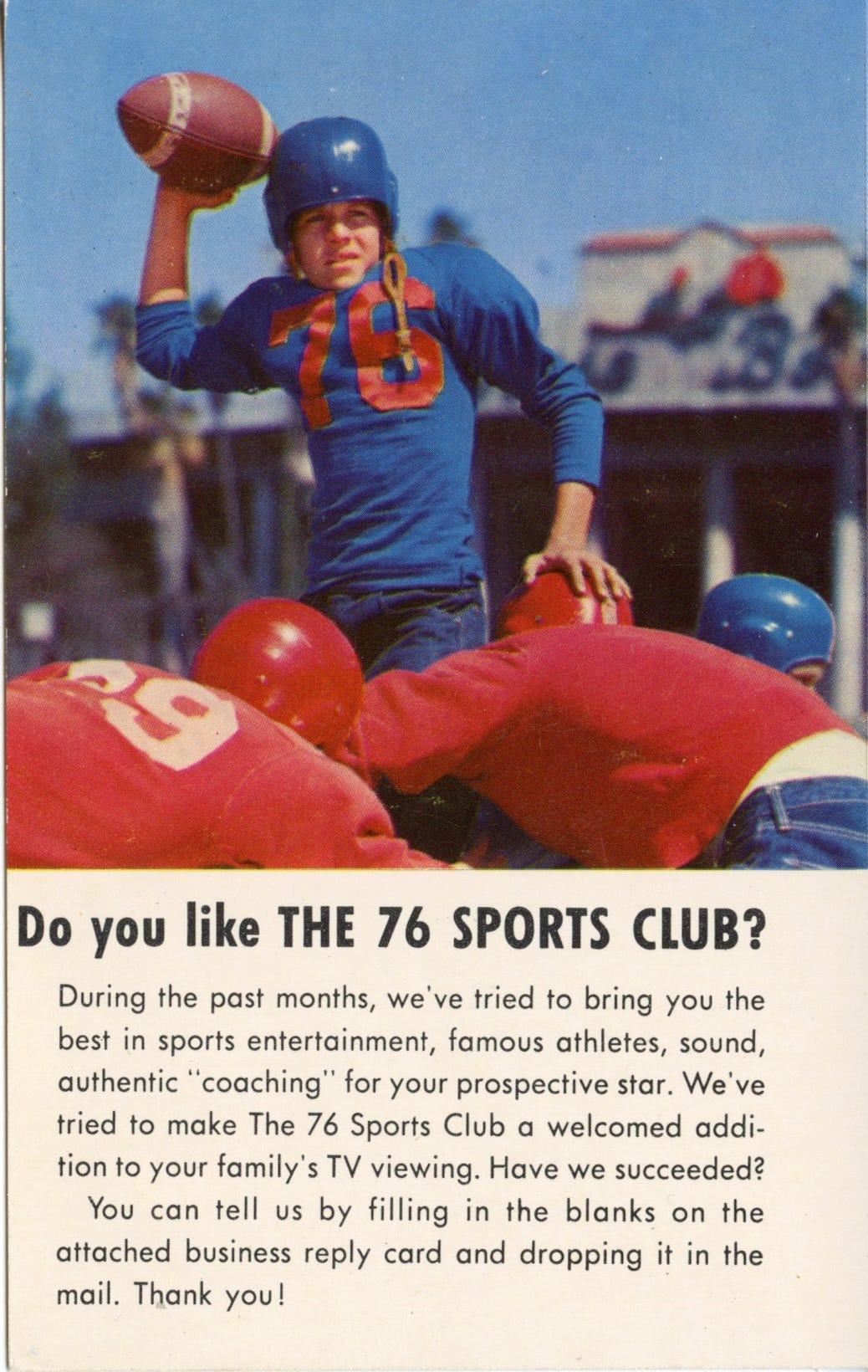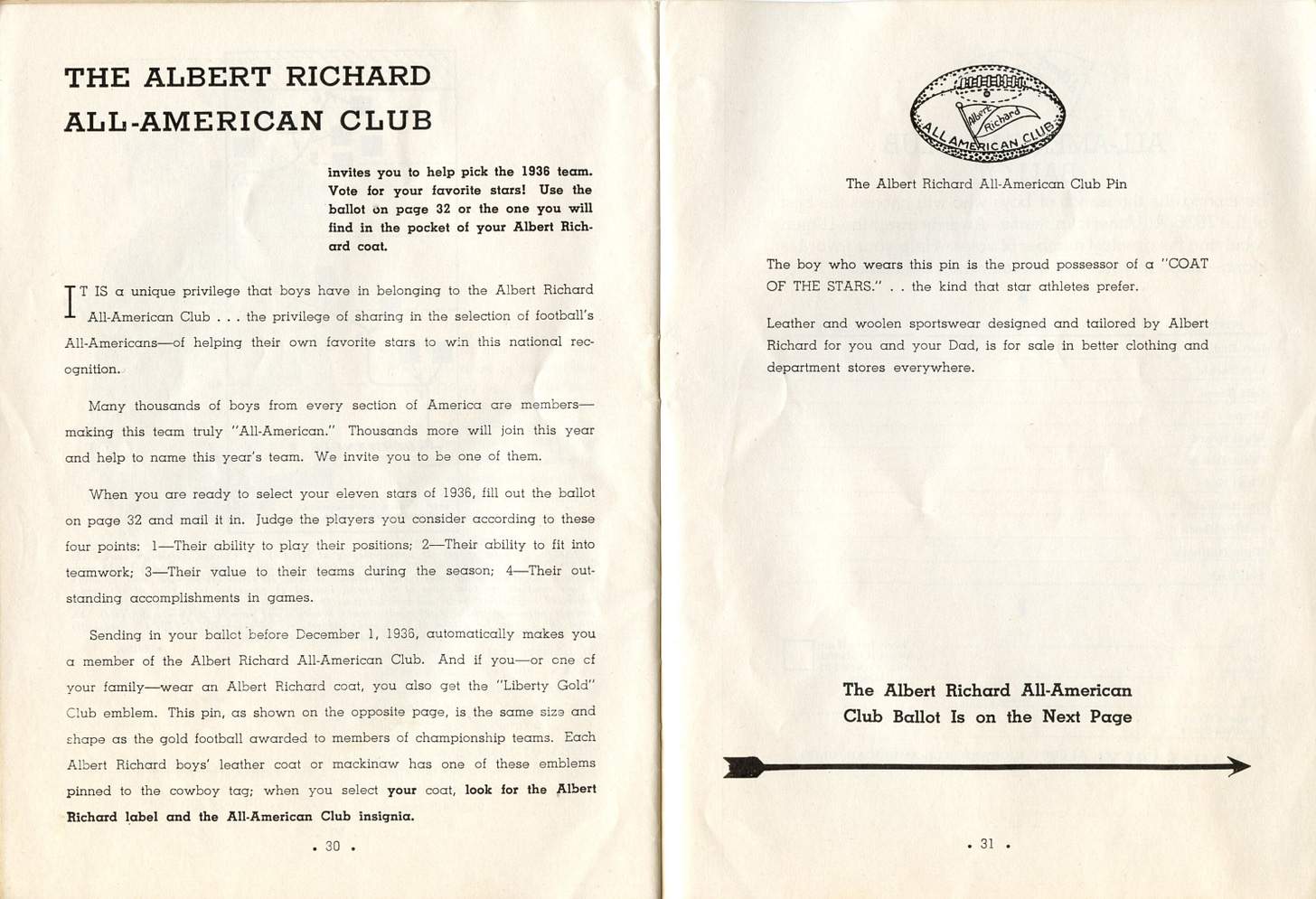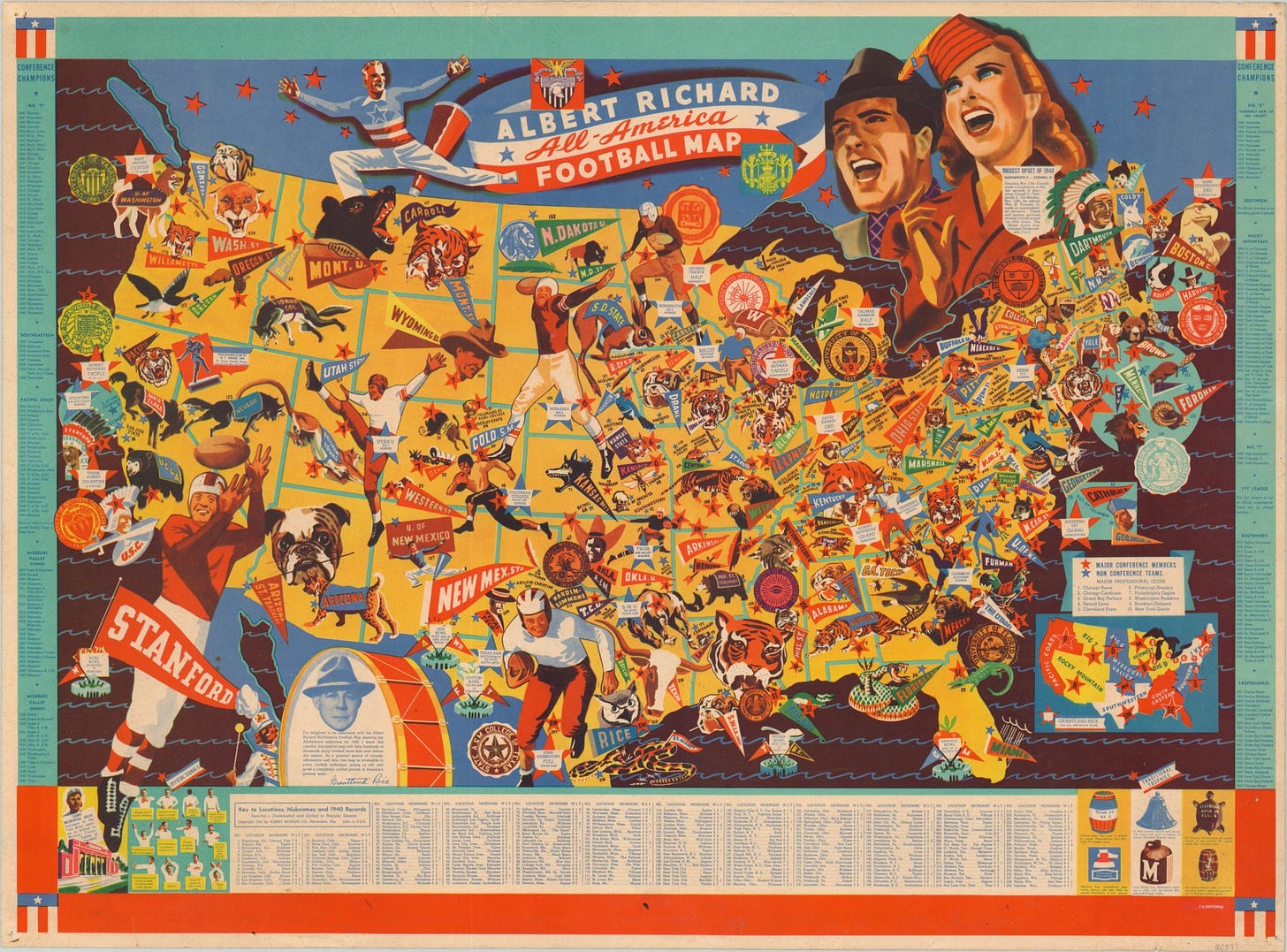Today's Tidbit... Fan Clubs
Fan clubs began in the U.S. in the late 1890s and took many forms. Early fan clubs included the Pittsburgh Fanciers' Club, whose members spent time collecting and displaying various poultry breeds, a hobby that continues today. However, most early fan clubs were people in business who supported or boosted local baseball teams ranging from the big leagues to semi-pro.
Other fan clubs supported high schools, especially their sports programs, and were indistinguishable from booster clubs. Early fan clubs seldom supported college teams, presumably because colleges already had alumni organizations and networks and did not promote fandom in the general public.
Fan clubs targeting children and teens as members appeared by the 1930s and came in two types that dominated the club scene for decades. One set of fan clubs supported pop stars like Shirley Temple, Fabian, or Elvis Presley, and the other supported sports teams or sports generally.
A manufacturer of coats for boys and young men, Albert Richard, had an All-American club in 1936 that gave away a book with football stories and encouraged club members to submit their nominations for the Albert Richard All-American team.
The Albert Richard All-American Club would likely be long forgotten today were it not for the stylized football maps they produced yearly for a decade or more, which hung in retail stores and are now highly collectible.
Another fan club with commercial beginnings was the 76 Sports Club, which began in 1957. Southern California's Union Oil of California distributed gasoline and other petroleum products on the West Coast under the 76, Union Oil, and Unocal brands. They sponsored NASCAR in its inaugural season in 1948 and the Los Angeles Dodgers in their first season in LA in 1958.
As the 1957 football season dawned, the 76 Sports Club began sponsoring the televised 76 Club Show with Rev. Bob Richards as the director and host. Richards was an Olympic bronze medalist in the pole vault in 1948, won gold in 1952 and 1956, and became the first athlete featured on the front of the Wheaties box in 1958.
The half-hour show featured interviews with male and female athletes in various sports. The regional show also included segments tailored for each state, such as introducing high school all-state team members.
At the local level, retailers gave away booklets by athletes such as LeRoy Hirsch, Les Richter, Frankie Albert, YA Tittle, and Bill Russell every two weeks. Others ran lotteries that gave away footballs to kids who submitted their names and addresses when joining the 76 Club. Local retailers also mailed letters from Santa to club members.

Bob Richards stepped down from the sports director and host role at the end of 1957 and was quickly replaced by Elroy "Crazylegs" Hirsch, a recently retired star receiver for the Rams who had worked with Richards.
The TV show and club continued for two more years before disappearing, but not before Hirsch made appearances at school banquets, hospital beds, and all manner of youth athletic events, in addition to hosting the weekly show.
Fan clubs continue today in music and sports, though most rely on technology to distribute their messages rather than handing out booklets at local clothing stores or gas stations.
Football Archaeology is reader-supported. Click here to buy one of my books or otherwise support the site.




